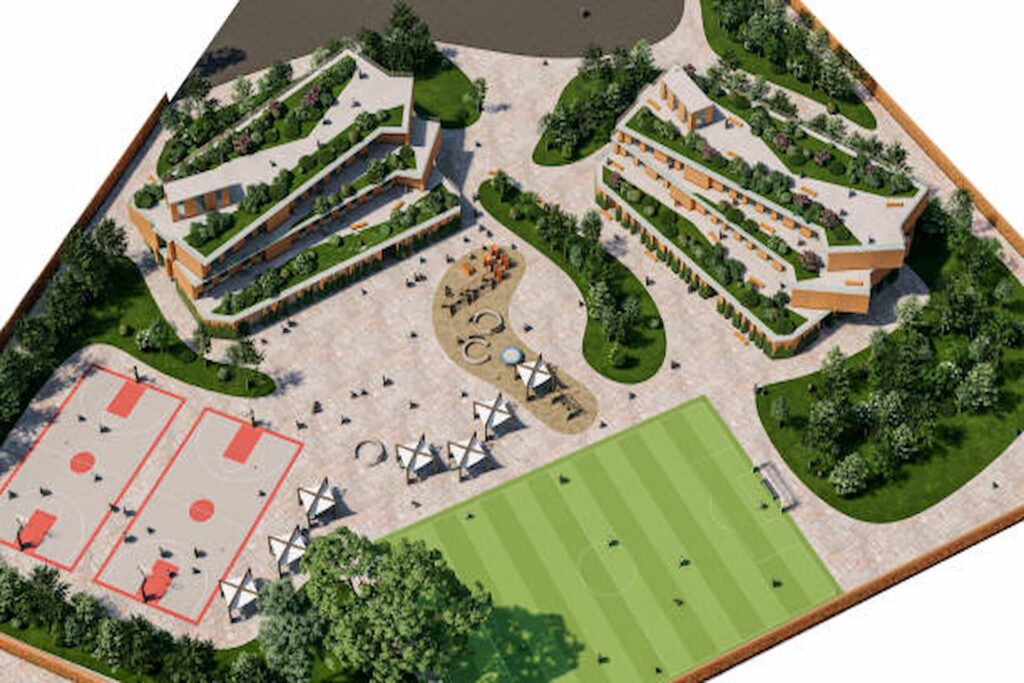In recent years, the pressing challenges of urbanisation and climate change have prompted cities and communities worldwide to rethink their approach to urban development. Traditional infrastructure, often characterised by concrete and steel, is giving way to more sustainable, eco-friendly solutions. Green infrastructure planning is at the forefront of this transformation, an approach that integrates natural systems and processes into the built environment. Green infrastructure consultants are pivotal in this movement, offering innovative solutions that enhance urban resilience, improve public health, and foster environmental sustainability.
The Rise Of Green Infrastructure
- Green infrastructure refers to a network of natural and semi-natural systems that provide environmental, economic, and social benefits. This includes parks, green roofs, permeable pavements, urban forests, and wetlands. Unlike conventional grey infrastructure, which relies heavily on artificial constructs, green infrastructure leverages nature’s capabilities to manage urban challenges such as stormwater runoff, air pollution, and urban heat islands.
- Although the concept of green infrastructure has been introduced previously, its application has gained significant traction in the last decade, driven by the increasing awareness of climate change impacts and the need for sustainable urban growth. Cities now look beyond short-term fixes, seeking long-term, resilient solutions that adapt to changing environmental conditions.
Key Innovations In Green Infrastructure Planning
- Bright Green Roofs and Walls: Green roofs and walls are aesthetically pleasing and serve critical environmental functions. Innovations in these areas include bright green roofs equipped with sensors and automated irrigation systems. These technologies optimise water usage and ensure vegetation health, improving insulation, reducing energy consumption, and enhancing biodiversity in urban areas.
- Permeable Pavements: Traditional pavements contribute significantly to urban flooding by preventing natural water infiltration. Porous pavements are an innovative solution that allows water to pass through, reducing surface runoff and recharging groundwater. Recent advancements have made these pavements more durable and cost-effective, making them viable for roads, parking lots, and pedestrian pathways.
- Urban Forests and Green Corridors: Urban forests and green corridors connect natural habitats, promote biodiversity, and provide recreational spaces for city dwellers. Innovations in this area include the strategic use of native species, and the implementation of urban forestry management plans that ensure long-term sustainability and resilience. These green spaces help mitigate the urban heat island effect, improve air quality, and enhance the overall quality of life.
- Constructed Wetlands: Constructed wetlands are engineered systems that mimic the functions of natural wetlands. They are designed to treat stormwater and wastewater, providing an efficient and sustainable alternative to traditional water treatment facilities. Recent developments in constructed wetlands focus on improving their efficiency and capacity to handle larger volumes of water, making them an essential component of urban water management strategies.
- Green Infrastructure in Transportation Planning: Integrating green infrastructure into transportation planning is an emerging trend that aims to create more sustainable and livable cities. This includes green bridges, which allow wildlife to cross highways safely, and green belts along roads that reduce noise pollution and provide shade. These initiatives not only enhance ecological connectivity but also improve the well-being of urban residents.
The Role Of Green Infrastructure Consultants
- Green infrastructure consultants are essential in bridging the gap between innovative concepts and practical implementation. They bring expertise in environmental science, urban planning, and sustainable design and guide projects from conception to completion. Their role involves conducting environmental impact assessments, designing eco-friendly solutions, and ensuring compliance with regulations and standards.
- Consultants also play a critical role in community engagement and education, helping stakeholders understand the benefits of green infrastructure and fostering public support. By collaborating with architects, engineers, and policymakers, they ensure that green infrastructure projects are integrated seamlessly into the urban fabric, delivering maximum benefits to the environment and the community.
Conclusion
The field of green infrastructure planning is evolving rapidly, driven by the need for sustainable, resilient, and livable cities. Innovations in this area are transforming urban landscapes, offering multifaceted benefits beyond environmental protection. Green infrastructure consultants are at the heart of this transformation, providing the expertise and guidance necessary to turn visionary ideas into reality. As cities worldwide embrace green infrastructure, we move closer to a future where urban development and environmental stewardship go hand in hand, creating healthier, more sustainable communities for future generations.

